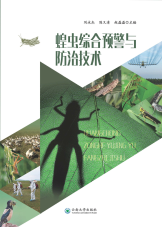
主要责任者: 刘永杰,陈又清,赵磊磊
责任方式: 主编
出版者: 云南大学出版社
出版地: 昆明
字数: 190 千字
页码: 1-145
开本: 16
中图分类号: S433.2
语种:中
定价:48.00
出版时间:2021-05
丛书多卷书否:否
书目简介:本册工具书共收录147条词条。
| 词条 | 蝗虫综合预警与防治技术 |
| 类别 | 中文百科知识 |
| 释义 |  主要责任者: 刘永杰,陈又清,赵磊磊 责任方式: 主编 出版者: 云南大学出版社 出版地: 昆明 字数: 190 千字 页码: 1-145 开本: 16 中图分类号: S433.2 语种:中 定价:48.00 出版时间:2021-05 丛书多卷书否:否 书目简介:本册工具书共收录147条词条。 |
| 随便看 |
开放百科全书收录579518条英语、德语、日语等多语种百科知识,基本涵盖了大多数领域的百科知识,是一部内容自由、开放的电子版国际百科全书。